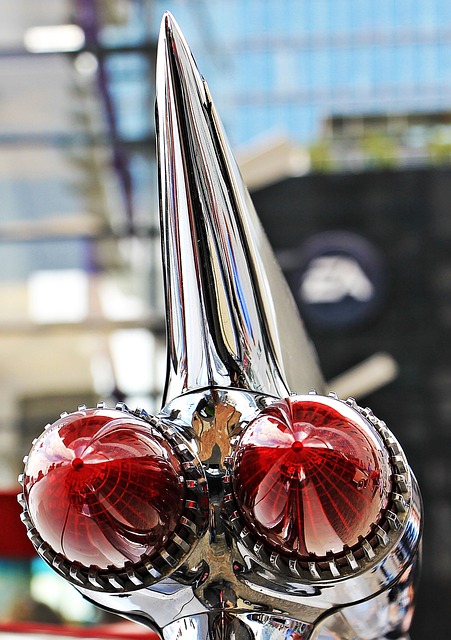Looking to register your car in California? This comprehensive guide walks you through every step of the process, from understanding the requirements to submitting documents and even using the DMV’s efficient online VIN verifier tool. By following these detailed instructions, you’ll ensure a smooth registration experience. Additionally, learn crucial post-registration tasks to maintain your vehicle’s legal status in the Golden State.
- Understanding the California Vehicle Registration Process
- Gather Required Documents for Car Registration
- How to Use DMV's Online Vin Verifier Tool
- Steps to Register a Car in Person at a California DMV Office
- After-Care: Important Post-Registration Tasks and Considerations
Understanding the California Vehicle Registration Process

In California, registering a car involves several steps that can seem intricate but are designed to ensure safety and compliance with state regulations. The process begins with gathering essential documents, including proof of ownership, valid identification, and current auto insurance. Once prepared, the next crucial step is obtaining a Vehicle Identification Number (VIN) verification from the Department of Motor Vehicles (DMV). This involves using a reliable VIN verifier to cross-check the vehicle’s details against DMV records, ensuring that it meets all legal standards before registration can proceed.
A mobile VIN verifier plays a significant role in this process by offering convenient and efficient vin inspection services. This technology allows for quick verification of a car’s history and specifications right at the time of purchase or during the registration renewal process. By utilizing these modern tools, California residents can ensure their vehicle’s integrity and comply with state laws faster and more accurately than ever before.
Gather Required Documents for Car Registration

Before you start the registration process, it’s crucial to gather all the necessary documents for car registration in California. The key piece is the Vehicle Identification Number (VIN) verification. This can be done through a reputable DMV VIN verifier or a mobile vin inspection service, ensuring your vehicle’s history and authenticity are accurately checked.
Along with the VIN details, you’ll need to provide proof of insurance, valid driver’s license, and registration from the previous state (if applicable). If you’ve recently purchased the car, the seller should provide a Bill of Sale or a vehicle title as part of the transaction, which will also be required for registration.
How to Use DMV's Online Vin Verifier Tool

Using the DMV’s Online VIN Verifier Tool is a convenient way to check the validity of a vehicle’s VIN (Vehicle Identification Number) before registration. This tool allows users to input the VIN and instantly receive information about the car’s history, including its make, model, year, and any reported accidents or titles. It’s an efficient step in ensuring you’re registering a safe and legal vehicle.
To utilize this service, simply visit the California DMV website and locate the VIN Verifier Tool. Enter the 17-character VIN into the designated field and click ‘Verify’. The tool will then provide detailed data, helping you make an informed decision about whether to proceed with registration or conduct further vin inspection through alternative means, such as a mobile vin verifier.
Steps to Register a Car in Person at a California DMV Office

To register your car in person at a California DMV office, start by gathering all necessary documents including your vehicle’s registration from its previous state, proof of insurance, and identification documents like a driver’s license or passport. Next, visit a local California DMV branch during their operational hours. Before submitting your application, make sure to get a DMV VIN verifier to confirm the vehicle’s identity and history, ensuring a smooth process.
Once at the DMV, locate the section dedicated to vehicle registration. Fill out the required forms accurately, providing details about your car, including its make, model, year, and unique Vehicle Identification Number (VIN). After completing the paperwork, submit it along with the necessary fees. An official will verify your documents and, if everything is in order, issue you a California registration certificate and license plate. Consider using a mobile VIN inspection or mobile VIN verification service for added convenience to streamline this process.
After-Care: Important Post-Registration Tasks and Considerations

After successfully registering your car with the DMV, there are several crucial post-registration tasks to ensure proper vehicle maintenance and compliance. One essential step is to obtain a Vehicle Identification Number (VIN) inspection or use a reliable mobile VIN verifier. This process confirms the authenticity of your car’s details, including its make, model, and year, which is critical for insurance purposes and preventing fraud.
Additionally, regular vehicle inspections are vital to maintain safety standards. California requires these checks to ensure your car meets emission and safety regulations. Utilizing a mobile VIN inspection service can simplify this process, allowing you to verify your car’s history and stay up-to-date with necessary maintenance from the comfort of your home. Remember, these post-registration considerations contribute to a seamless ownership experience and help keep California’s roads safe for all.
Registering your car in California is a straightforward process that requires preparation and attention to detail. By understanding the steps involved, gathering the necessary documents, and utilizing tools like the DMV’s online VIN verifier, you can ensure a smooth registration experience. Whether completing the process online or in-person at a DMV office, these guidelines will help you navigate California’s vehicle registration requirements with ease, allowing you to hit the road legally and confidently.
